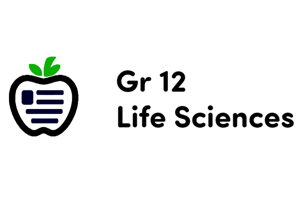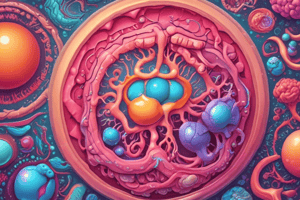Podcast
Questions and Answers
What is the role of estrogen in the menstrual cycle?
What is the role of estrogen in the menstrual cycle?
- Controls the production and release of eggs
- Stimulates the uterus lining to thicken (correct)
- Prompts the growth of oocytes
- Triggers menstruation
What is the ovarian cycle composed of?
What is the ovarian cycle composed of?
- Cyclical rise and fall of follicle stimulating hormone
- Follicular phase, ovulation, and luteal phase (correct)
- Menstrual, proliferative and secretory phases
- Production and growth of oocytes
What prompts the production and growth of oocytes?
What prompts the production and growth of oocytes?
- Cyclic release of estrogen and progesterone
- Falling progesterone levels
- Stimulation by estrogen
- Cyclical rise and fall of follicle stimulating hormone (correct)
What is the uterine cycle responsible for?
What is the uterine cycle responsible for?
What is menstruation a sign of?
What is menstruation a sign of?
What is the role of estrogen in the menstrual cycle?
What is the role of estrogen in the menstrual cycle?
What is the uterine cycle responsible for?
What is the uterine cycle responsible for?
What prompts the production and growth of oocytes in the menstrual cycle?
What prompts the production and growth of oocytes in the menstrual cycle?
What is menstruation a sign of in the menstrual cycle?
What is menstruation a sign of in the menstrual cycle?
What are the phases of the uterine cycle in order?
What are the phases of the uterine cycle in order?
Flashcards are hidden until you start studying
Study Notes
Role of Estrogen in the Menstrual Cycle
- Estrogen regulates the menstrual cycle and influences the development of the endometrial lining.
- Peak levels of estrogen trigger the luteinizing hormone surge, leading to ovulation.
- Contributes to secondary sexual characteristics and reproductive function.
Ovarian Cycle Composition
- The ovarian cycle comprises three phases: follicular phase, ovulation, and luteal phase.
- The follicular phase involves the maturation of ovarian follicles stimulated by hormones.
- Ovulation marks the release of a mature egg from the dominant follicle.
- The luteal phase occurs after ovulation, during which the corpus luteum forms and produces hormones.
Oocyte Production and Growth
- The production and growth of oocytes are prompted by gonadotropins, specifically follicle-stimulating hormone (FSH).
- FSH stimulates the growth of ovarian follicles, leading to oocyte maturation.
- Hormonal feedback loops regulate this process, ensuring proper timing during the menstrual cycle.
Uterine Cycle Responsibility
- The uterine cycle prepares the endometrium for potential implantation of a fertilized egg.
- It consists of the menstrual phase, proliferative phase, and secretory phase.
- Hormonal changes throughout the cycle synchronize the endometrial development with ovarian function.
Menstruation Significance
- Menstruation is a sign of the shedding of the endometrial lining when fertilization does not occur.
- It typically indicates the end of one menstrual cycle and the beginning of another.
- Menstrual flow is composed of blood, tissue, and mucus discharged from the uterus.
Phases of the Uterine Cycle
- The uterine cycle is divided into three main phases:
- Menstrual Phase: Shedding of the endometrial lining.
- Proliferative Phase: Regrowth of the endometrium under estrogen influence.
- Secretory Phase: Further thickening of the endometrium, preparing for potential embryo implantation.
Studying That Suits You
Use AI to generate personalized quizzes and flashcards to suit your learning preferences.




